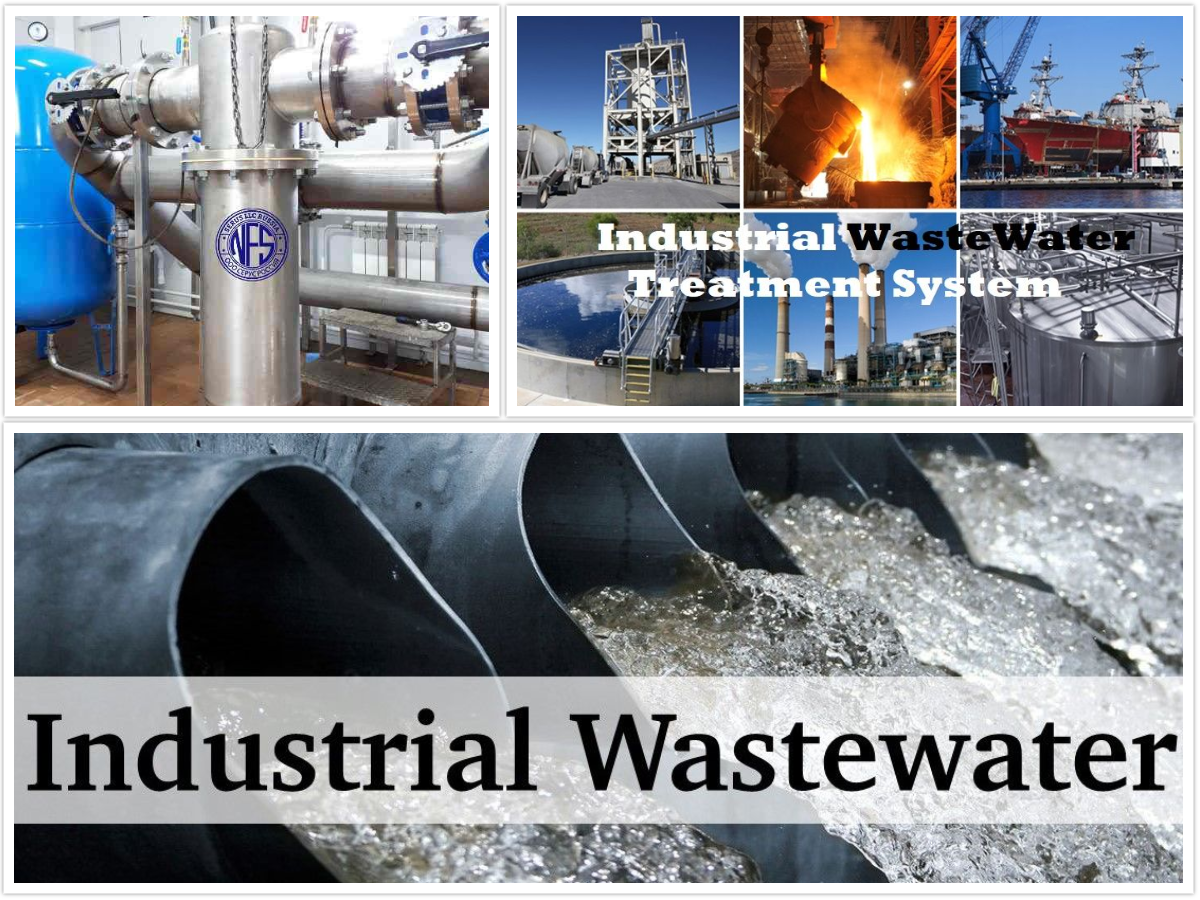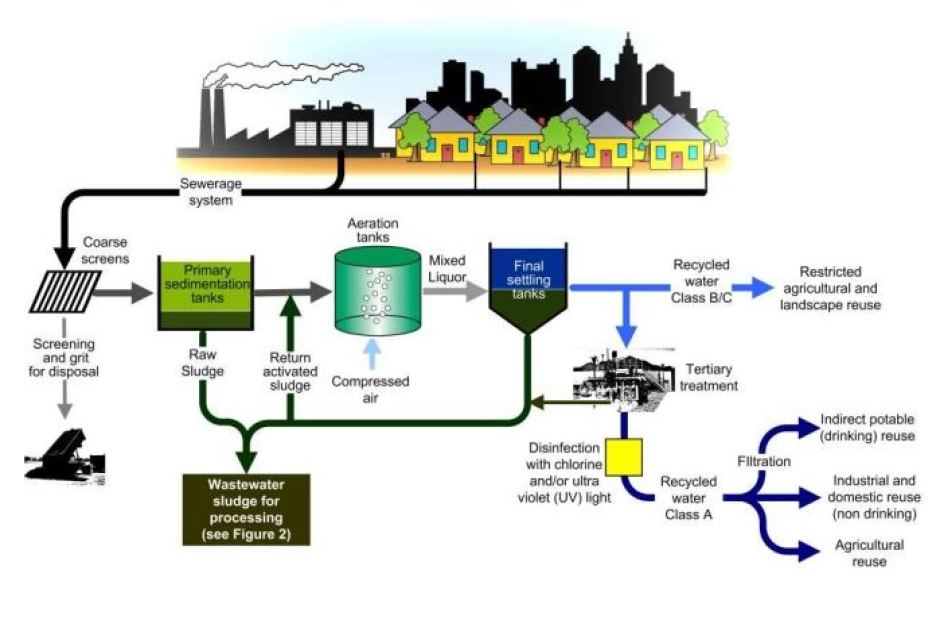Industrial Waste Water Treatment-- Industrial-Grade Water Purification and Filtration Solutions
Wiki Article
Key Strategies in Hazardous Waste Water Treatment Processes
The therapy of industrial wastewater is a crucial facet of ecological monitoring, involving a variety of techniques created to alleviate the influence of pollutants. Developments in technologies such as membrane layer filtration and progressed oxidation processes supply cutting-edge services for enhancing treatment effectiveness.Physical Treatment Methods
Exactly how properly can physical treatment techniques resolve the intricacies of commercial wastewater? Physical therapy approaches play a critical function in the initial phases of wastewater administration, concentrating largely on the elimination of solids and big particulates. Techniques such as sedimentation, filtering, and flotation are important for lowering the concentration of put on hold solids, thereby improving the efficiency of succeeding treatment procedures.Sedimentation includes the gravitational settling of solids, enabling for the separation of heavier products from the wastewater. This method is specifically effective in clarifying water prior to chemical or organic therapies.
Additionally, flotation protection techniques, which use air bubbles to raise put on hold solids to the surface for removal, are efficient in treating wastewater with high concentrations of fats, oils, and greases. In general, physical therapy approaches act as a crucial very first step in the extensive monitoring of commercial wastewater, ensuring that the tons on succeeding treatment stages is minimized and improving general treatment effectiveness.
Chemical Therapy Techniques
While physical treatment techniques lay the groundwork for reliable wastewater monitoring, chemical therapy techniques are crucial for resolving the much more complicated contaminants frequently found in industrial effluents. These methods utilize different chemical representatives to speed up, reduce the effects of, or oxidize damaging substances, making certain a more complete elimination of pollutants.
One typical strategy is coagulation and flocculation, where chemical coagulants such as light weight aluminum sulfate or ferric chloride are included in advertise the aggregation of put on hold bits. This procedure enhances solid-liquid separation, reducing turbidity and improving water high quality. In addition, neutralization procedures are used to change the pH of wastewater, making use of acids or bases to counteract acidic or alkaline streams, specifically.
Oxidation-reduction reactions play a critical duty in degrading organic impurities and virus. Chemical oxidants like ozone, chlorine, or hydrogen peroxide are utilized to break down intricate organic compounds, making them much less hazardous or more eco-friendly. Progressed oxidation procedures (AOPs) integrate several oxidation strategies to boost pollutant removal efficiency.
Biological Therapy Processes
The efficiency of wastewater treatment is dramatically enhanced by organic therapy processes, which harness the natural metabolic tasks of microbes to decompose natural matter and get rid of toxins. Industrial Waste Water Treatment. These processes primarily involve cardiovascular and anaerobic food digestion, each tailored for particular sorts of wastewaterAerobic therapy processes utilize oxygen to sustain microbial growth, promoting the failure of natural toxins right into co2 and water. Common techniques consist of activated sludge systems, where aeration storage tanks help with the mixing of wastewater with bacteria, and trickling filters, which urge biofilm growth on media surface areas.
On the other hand, anaerobic therapy processes occur in the absence of oxygen, using anaerobic germs to decay natural issue, resulting in biogas manufacturing, a renewable energy source. Anaerobic digesters are frequently employed in commercial setups for this function, efficiently lowering the quantity of sludge while creating important biogas.
The choice of a biological therapy technique relies on wastewater characteristics, treatment goals, and governing standards. The integration of biological procedures in wastewater therapy not just enhances contaminant removal efficiency however likewise promotes sustainability by reducing chemical usage and sustaining resource recuperation.
Advanced Oxidation Processes

Usual AOP methods include Fenton's photocatalysis, reagent, and ozonation. Fenton's reagent, a combination of hydrogen peroxide and ferrous iron, militarizes the development of hydroxyl radicals, making it reliable for dealing with wastewater consisting of phenolic compounds and other recalcitrant substances. Ozonation makes use of ozone as a powerful oxidant, with the ability of weakening a wide variety of natural toxins while all at once disinfecting the effluent. Photocatalysis uses light-activated stimulants, such as titanium dioxide, to enhance oxidation reactions and remove contaminants.
AOPs use a number of advantages, consisting of decreased sludge production and the capability to deal with wastewater with high concentrations of natural toxins. Nevertheless, the implementation of AOPs needs cautious factor to consider of functional criteria and cost-effectiveness, guaranteeing that these advanced strategies are properly incorporated right into existing wastewater treatment systems.
Membrane Filtration Technologies

Microfiltration is effective for removing put on hold germs and solids, while ultrafiltration targets smaller organic particles and viruses. Nanofiltration links the gap between ultrafiltration and Discover More Here turn around osmosis, efficiently removing organic compounds and divalent ions. Reverse osmosis provides the highest degree of purification, used primarily for desalination and removing mono-valent ions.
Membrane innovations use numerous advantages, including low power intake contrasted to typical therapy methods, modular style for scalability, and the potential for water recuperation and reuse. Nonetheless, difficulties such as membrane layer fouling and the requirement for normal upkeep should be addressed to make certain system efficacy. On the whole, membrane layer filtration technologies represent a vital part of modern industrial wastewater therapy approaches, promoting sustainability and resource preservation in water management.
Conclusion
In conclusion, commercial wastewater treatment employs a varied array of strategies, consisting of physical, chemical, biological, and advanced techniques. Proceeded improvements in these methodologies will certainly further improve the performance and performance of wastewater therapy procedures in commercial settings.The therapy of industrial wastewater is a critical facet of ecological administration, entailing a range of methods developed to alleviate the influence of pollutants.How effectively can physical therapy methods address the intricacies of commercial wastewater?Advanced oxidation procedures (AOPs) stand for a cutting-edge technique in commercial wastewater treatment, designed to successfully break down organic toxins that are usually immune to standard treatment techniques (Industrial Waste Water Treatment).In conclusion, industrial wastewater treatment employs a diverse selection of methods, consisting of physical, chemical, organic, and advanced approaches. Proceeded developments in these methods will further enhance the performance and effectiveness of wastewater therapy procedures in commercial settings
Report this wiki page